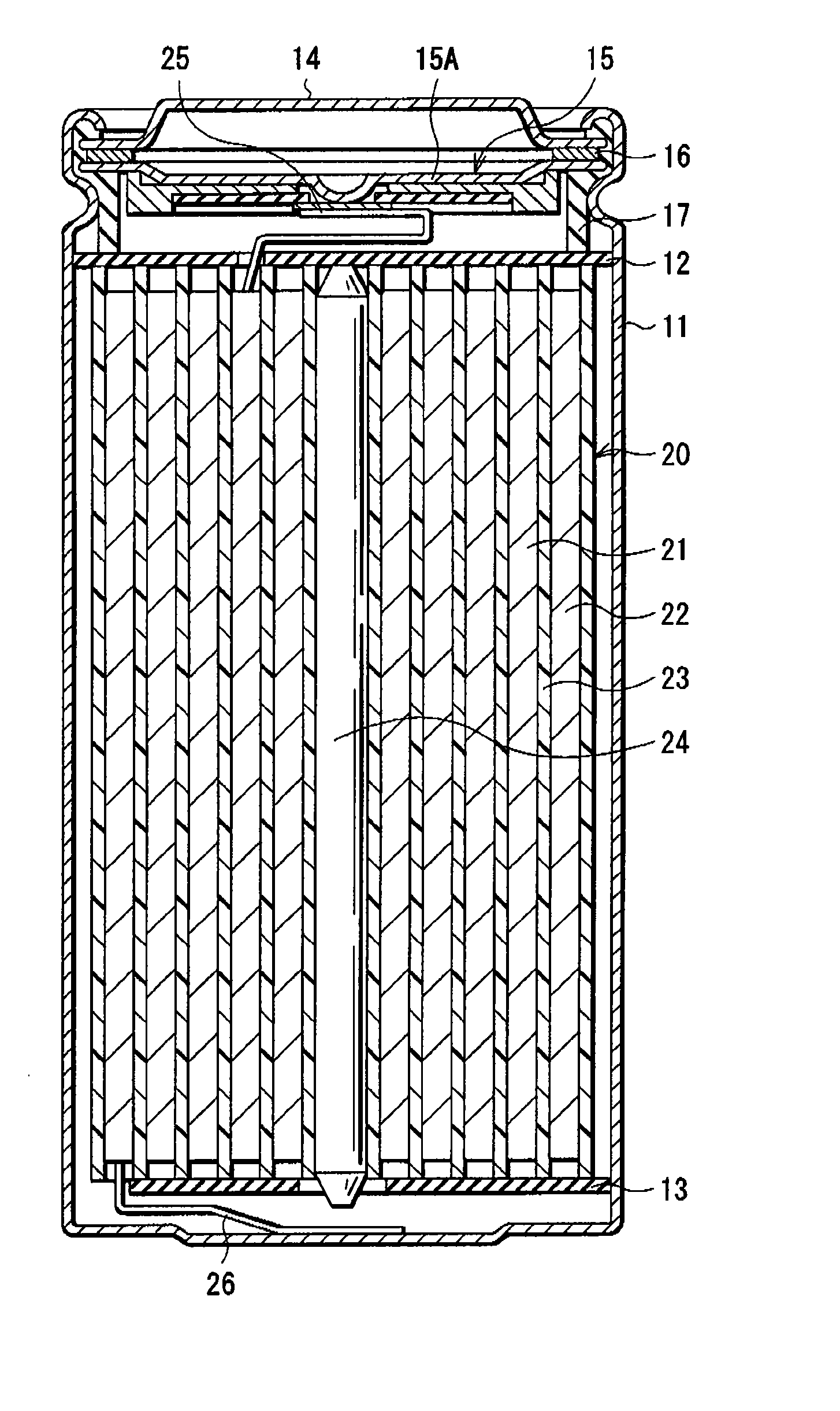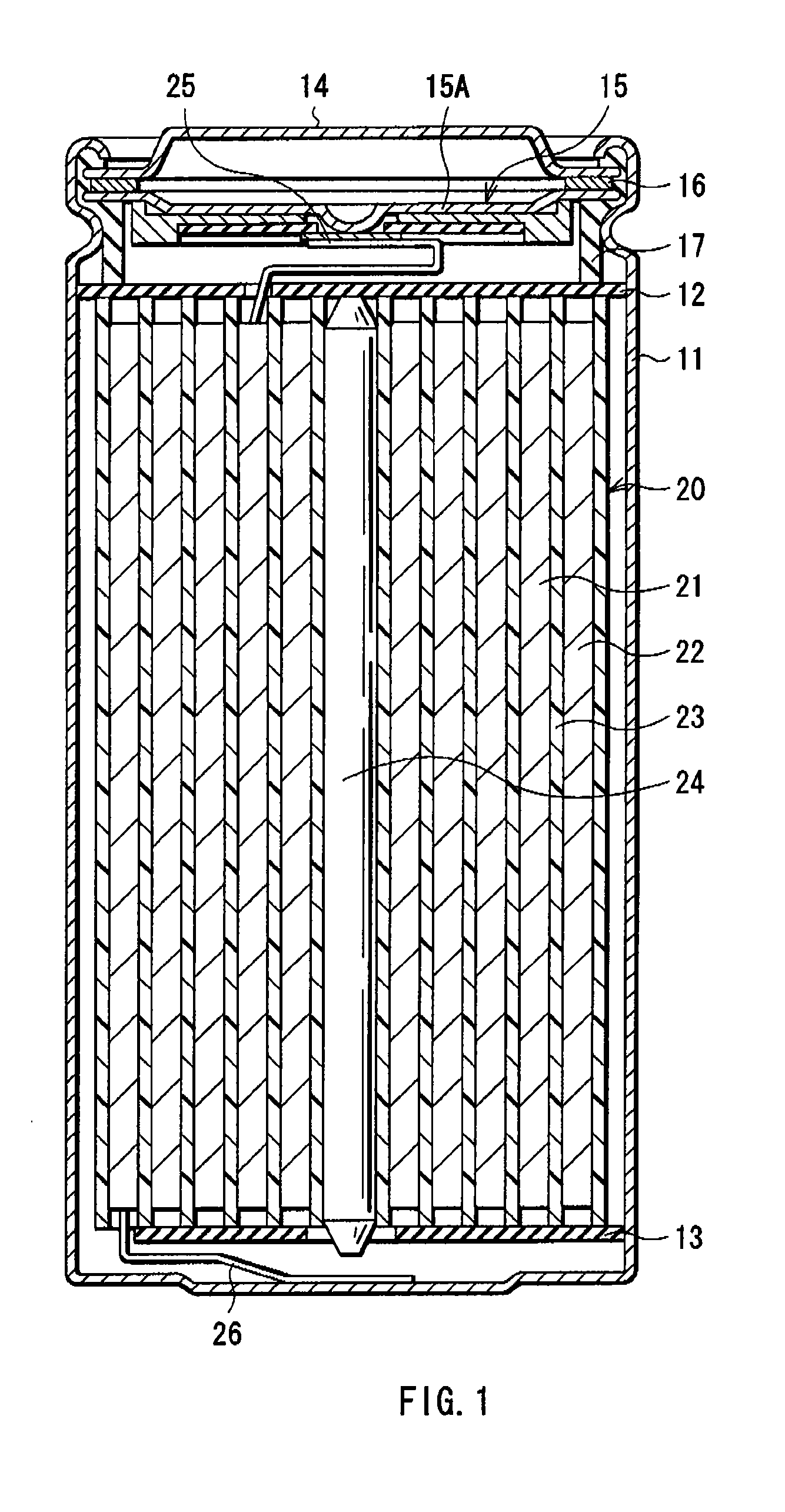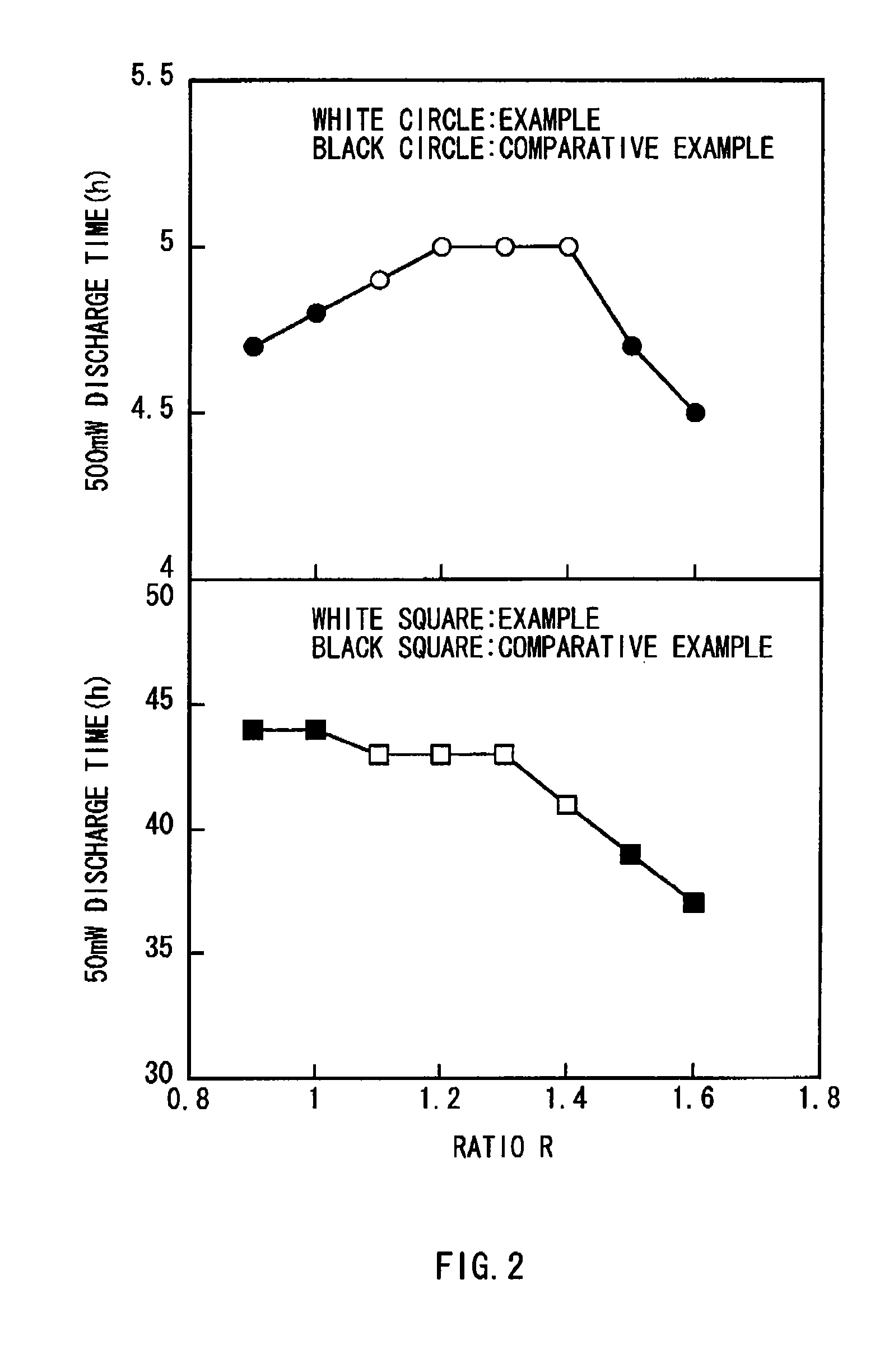Battery
a lithium iron sulfide and battery technology, applied in the field of batteries, can solve the problems of difficult for lithium iron sulfide batteries to gain superiority to alkaline batteries, and the capacity of lithium iron sulfide batteries is slightly inferior to that of alkaline batteries, so as to achieve high load characteristics, improve constant output discharge capacity, and increase average discharge voltage
- Summary
- Abstract
- Description
- Claims
- Application Information
AI Technical Summary
Benefits of technology
Problems solved by technology
Method used
Image
Examples
examples
[0028] Further, specific examples are described in detail.
examples 1 to 4
[0029] First, iron sulfide powder, graphite as an electrical conductor, and polyvinylidene fluoride as a binder were mixed at the weight ratio of iron sulfide:graphite:polyvinylidene fluoride=90:5:5. The resultant mixture is dispersed in a disperse medium and applied to the both faces of the cathode current collector made of an aluminum foil, which was compression-molded to form the cathode active material layer, and thereby forming the cathode 21. Next, the cathode lead 25 made of aluminum was attached to the cathode 21.
[0030] Further, as the anode 22, a lithium metal foil was prepared and the anode lead 26 made of nickel was attached to the anode 22. In Examples 1 to 4, the thickness of the cathode active material layer and the thickness of the anode 22 were adjusted so that the ratio R of the discharge capacity per unit area of the cathode 21 to the discharge capacity per unit area of the anode 22 became 1.1, 1.2, 1.3 or 1.4 as shown in Table 1.
[0031] Subsequently, the cathode ...
PUM
| Property | Measurement | Unit |
|---|---|---|
| discharging voltage | aaaaa | aaaaa |
| weight ratio | aaaaa | aaaaa |
| voltage | aaaaa | aaaaa |
Abstract
Description
Claims
Application Information
 Login to View More
Login to View More - R&D
- Intellectual Property
- Life Sciences
- Materials
- Tech Scout
- Unparalleled Data Quality
- Higher Quality Content
- 60% Fewer Hallucinations
Browse by: Latest US Patents, China's latest patents, Technical Efficacy Thesaurus, Application Domain, Technology Topic, Popular Technical Reports.
© 2025 PatSnap. All rights reserved.Legal|Privacy policy|Modern Slavery Act Transparency Statement|Sitemap|About US| Contact US: help@patsnap.com



